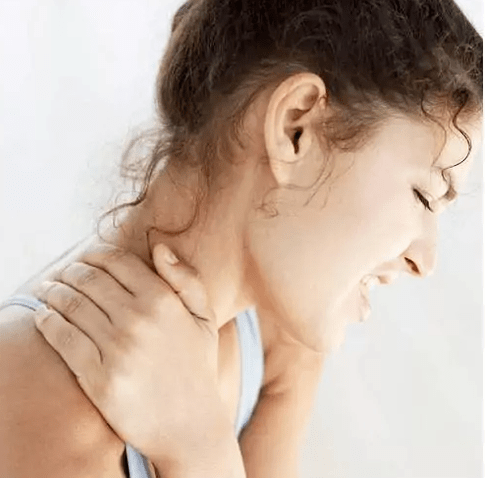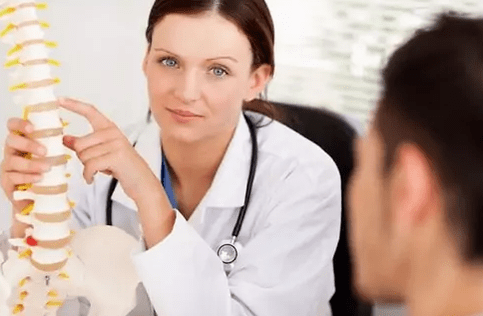Another serious illness of our time is osteochondria.His first signs can appear in his youth, when suddenly, with a long meeting on the computer or above the notebook, suddenly, initially, it begins to be simply discomfort, then pain in the seventh cervical vertebra.Soon the pain becomes such that it is difficult to turn your head or tear from the pillow.After a few days, the deterioration usually passes and before the next attack may pass several months, maybe years.However, don't flatter!The first attack is a serious warning that the mechanism of destructive dystrophic changes in your body has already begun.To understand this, let's understand what osteochondria is and why you have to start treating it from the first symptoms.

What is osteochondria?
Osteochondria are complex dystrophic changes in the spine in which these stages can be distinguished:
- Dystrophic changes in the cartilage web of intervertebral discs, as a result of which movements become limited and cause feelings of discomfort (stage I)
- Drink deformation and gradual decrease in intervertebral distance (stage II).
- The formation of intervertebral hernia (Stage III)
- Picture (osteophagus) formation and osteogenesis, making the movement very difficult and painful (stage IV)
Formation of a hernia is a complex process in which whole sections will be dedicated.However, now you should know that such a serious illness occurs if osteochondria does not deal with time.Therefore, so that you have an idea of what a hernia is, we will say in a nutshell.To do this, you need to turn to the anatomy again for a while and remember the spine and spine.
Distribution of the spine disc leads to weakening its fibrous ring and displacement of the main absorber of the disk (core), as a result of which the formulation of swelling (protrusion) or the so-called "pre-gryzh" occurs.Subsequently, under the influence of the load, sooner or later there is a rupture of the ring and the production of core outside the disc - the hernia itself is formed immediately, which causes severe pain when the radical nerve is damaged.
In order to detect the presence of osteochondrialism, especially in the early stages, when curvature does not give obvious external signs, it also determines its orientation and degree, it is necessary to display magnetic resonance.This diagnostic method causes no damage to human health, unlike X -Ray, it also allows you to accurately determine the divergence angle.Based on the description of the radiologist and magnetic resonance imaging, the expert creates the right treatment plan for the patient, who, of course, is the enhancement of the muscle corsette.
When choosing a clinic to undergo magnetic resonance imaging, it is necessary, first of all, to study the power of the equipment used and the qualifications of the clinic officials.
Types of spine osteochondry
Osteochondria can be of many types:
- The cervical is the most common, both young and old
- Thoracic - is relatively rare
- Back pain - develops after 40 years
- Sacral - usually changing from lumbar
- Common - affects various sections or even the entire spine
In the same sequence, the spontaneous development of this disease often occurs: starting with the superior cervical vertebrae and ending with sanctuary and pertussis.
But it happens that the type of osteochond is associated with human activity.Thus, the cervical is usually common among students, designers and all other representatives of the "brain" professions, in which the throat is in stable condition for a long time.Physical work employees, youth-dejeethoids can have lumbar osteochondria, taxi drivers, shoemakers and other representatives of the "sitting" specialties-a lumbar sacral plus with a cervical set!Hard of osteochondry is also often observed in VETE, which is almost all day at its feet, since it is the sanctuary that holds our body upright and the whole load falls on it during the stop or hiking process
The causes of the appearance and development of osteochondicity
However, osteochondria is not only a disease of a sedentary lifestyle, inappropriate attitude or consequence of weight lifting.There are many more factors and reasons for the origin of this disease.I will only point out the main:
- Incorrect diet with insufficient amount of protein and increased sugar and fats
- Violated metabolism and hormonal imbalance
- Infectious diseases
- Hypothermia
- High weight and obesity
- Injuries to the spine
- Degeneration of bones
- Hereditary diseases
- Stress
The main symptoms of osteochondicity
Cervical osteochondria:
- Pain in the neck and head (can give under the shoulder blade, in the sternum and hand)
- Dizziness, especially when you change the head position
- Numbness in areas of the throat, face, tongue, underwater
Thoracic osteochondria:
- Thoracic pain that can intensify inhalation and when moving
- Feel numbness in the chest
Lumbar:
- Pain in the lower back (may be acute or acute), which gives the feet and detection of pain pain can move throughout the length of the limb
- Feet (violation or even loss of sensitivity)

The pain for osteochondria is special neurological.Thus, headache, dizziness, numbness or legs on the legs tend to take as immediate manifestations of head or leg disease, although these may be symptoms of vertebral osteochondrication.Therefore, if you notice something restless in your prosperity, it coincides with the signs mentioned, be sure to visit a neuropathologist.The doctor, having examined, with suspicion of this disease, will necessarily prescribe an X -ray test.
The main methods of treatment of osteochondry
The most effective removal of back pain:
- Therapeutic gymnastics (back pain exercises)
- MLS Laser (after the 2nd session, the pain passes)
- Hivamat (a unique procedure that immediately relieves pain, but we must be exactly as 2-3 times.)
The very elimination of the causes of the evolution of osteochondalism is the main method of treatment and prevention.
Prevention and non -treatment
This is first of all:
- Active (Mobile) Lifestyle and Sport
- Normal diet with protein diet excluding fats and sugar
- Medical Physical Education (Exercise Therapy) with an individually selected set of exercises for each type of osteochondalism
- Physiotherapy (Magnetot Therapy, Ultrasound Therapy, Electrophoresis, Laser Therapy)
- Massage, manual and reflexology
However, such a conservative method of treatment is suitable for prevention to avoid the progression of osteochondry and not in the active period of the disease.But how to deal with this disease, if it begins, its manifestations are obvious and a person has a phase of frenzy, namely: exactly:
- pain and increased temperature
- Limited, given with great difficulties, movements
In this case, exercise therapy and physiotherapy are categorically contraindicated and exclusively used drug methods.
Methods of drug treatment
First of all, you need to stop the pain and relieve the inflammatory process in the nerve spine, which is annoyed.For this purpose, they are appointed:
- Non -Non -Anti -inflammatory drugs (NSAID).Corticosteroids, glucocorticoid IDR.(They are in charge of the NSAID operation is not enough)
- Novocaine exclusion (with intense pain)
- Preparations to remove muscle spasm.
- painkillers, gels and creams.
The second phase of treatment includes:
- The use of vasodilators: Osteochondria is always next to the stenosis of blood vessels and brain oxygen hunger (therefore headaches and dizziness)
- The appointment of funds that soothe the nervous system: patients with this disease are always alarming and suspicious, in most cases they are very afraid of the first attacks of the disease.
- Treatment of Consequent phenomena - these may be hypertension and violation of heart activity
- Treatment should be prescribed to you a neuropathologist in the form of Droppers, injections and tablets
Don't try to heal the disease yourself!
At the end of the acute period and the normalization of well -being, return to non -pharmaceutical methods of preventive treatment: Exercise, massage and physiotherapy in the absence of contraindications to them.
Health to you!




























